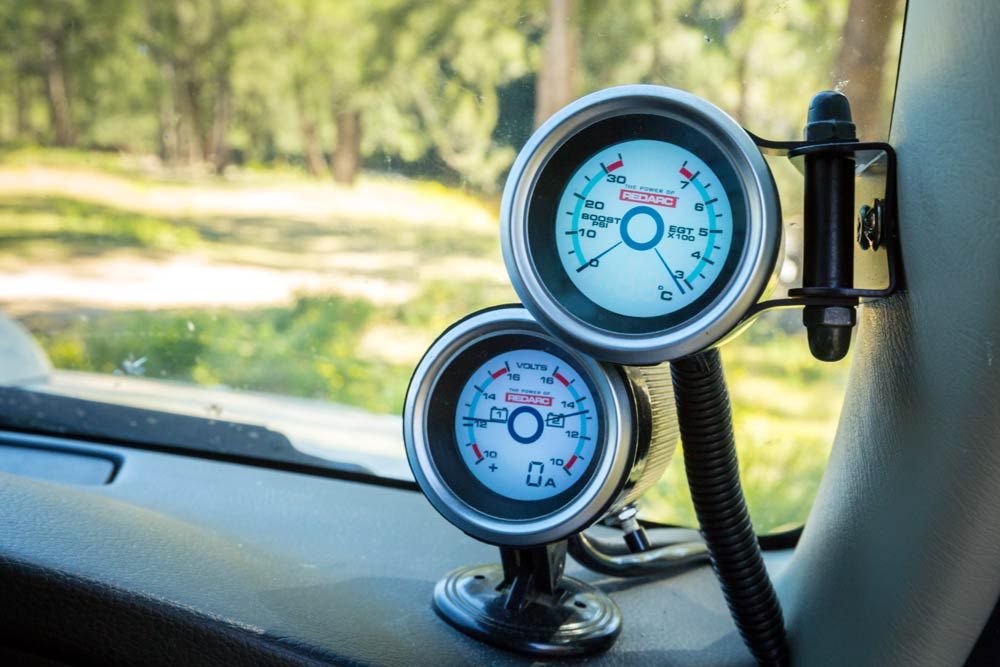There is a little secret that I haven’t really let many people in on. It’s funny how a car guy’s brain works – they never want to publicise any type of vehicular failure for fear of being judged! Today, I’m letting one out of the bag.
So 3 years ago on the way home from the Big Red Bash the little turbocharger on the ZD cried enough and packed it in about 300kms from home. We were heavily loaded as we were carrying a lot of gear for the event, but also supplies as we were travelling in a convoy on an 11 day trip. Loaded as we were, the weighbridge down the road from the office said we were within bounds. The tell tales were increased soot from the tailpipe, dropping performance and warning lights on the dash. Pulling up and adding some fuel conditioner (I thought it was a bad batch of fuel) as well as checking all the intake-side hoses, pipework and intercooler for leaks (I had replaced the air filter before I left Birdsville as it was caked), funnily enough gave me about 100kms of relief.
Then it came back and worse than ever. Backing off the Steinbauer to minimise over-fuelling and taking it very easy in the left lane, I was still giving my brother-in-law Shane who was trailing me a nostril full of soot all the way to my mechanic in the Blue Mountains. Whilst I was monitoring the vitals on the various gauges available on the dash, in the absence of a scan-gauge I was relying on the warning systems built into the factory Nissan ECU – not ideal.
Upon tearing down the intake side of the old grenade, the verdict was a warped intake manifold (a common issue for these motors) and an intake side turbo shaft that had too much play. The icing was a motor that had oily dust right through it.
A new factory spec huffer and a machined manifold with a couple of new studs, along with a good EGR clean and the old four pot was back up and purring. It was at this point that we decided to attend to the issues inherent in the ZD30 – power, or lack thereof. We bolted on a Cross Country Intercoolers ultimate intercooler to keep the intake temps down, as well as their catch can kit to minimise oil mist running through the engine and making a mess. On the exhaust side we decided on a Redback 3inch Heavy Duty exhaust system from the turbo back. These two mods helped the asthmatic ZD breathe a little easier and improved driveability markedly.
Most importantly, the Redback Dump Pipe had a bung to mount a pyrometer probe – critically, something we didn’t have before. The key is to measure Exhaust Gas Temperature (EGT). Now I’m not a mechanic and there are plenty of smarter, more technical people out there that have unpacked this subject, but basically it is a turbo diesel engine’s kryptonite. A turbocharger is driven by exhaust gas, now if that exhaust gas is too hot for the various metals used in this complex intake system, then there is potential for warping and other damage that leads to failures such as the ones diagnosed in our case.
The ZD30 is known to run hotter EGT’s than most engines – but they also are known for falling on their own sword. Having on-demand access to EGT’s and Boost pressure using the Redarc gauge system we put in as part of this repair has been an integral safety addition to MobileHQGU. Having these gauges on hand may have helped diagnose or manage the situation better – or at least have another line of information to help ascertain that things were going wrong.
Running pride of place on the A Pillar along with the voltage gauges for MobileHQGU’s dual battery system – the gauges are linked and use an enhanced lighting controller to allow for dimming control. Perhaps the most impressive feature of these gauge systems is the ability to set customer alarm points. Adjustable to the complete range of the readout, once limits you set are triggered, a combination of an audible buzzer along with a change in the colour on the backlit LCD screen will alert the driver. Our MobileHQGU is often driven by various members of the team, as such setting alarms for EGT, battery charge and boost has been a good way to ensure any chance of damage or issues are minimised.
The last 75,000 kilometers of driving has been completely uneventful, with the odometer now reading just north of 150,000 and I have no reason to believe that the ZD would not keep spinning for another 100,000 with no issues. Anyone who is doing any sort of serious remote touring needs to have access to quality information about the performance of their engine – the old saying prevention is the best cure rings true – cheap insurance if you ask me.
Happy Touring
Kalen


